Have you ever wondered what it would be like to witness the ancient and amazing journey of sea turtles? Well, Mexico’s turtle watching tours offer you the opportunity to do just that! In this article, we will delve into the enchanting experience of these tours and explore the wonders that await you. So, get ready to dive into the crystal-clear waters and discover the mesmerizing world of Mexico’s sea turtles.
Once you embark on a turtle watching tour in Mexico, a whole new world opens up before your eyes. You’ll have the chance to witness the incredible sight of mother turtles coming ashore to lay their eggs, and the awe-inspiring moment when baby turtles hatch and make their way towards the ocean. The beauty and wonder of these natural events are truly captivating, and being a part of them is an experience you will never forget. In this article, we will guide you through the best locations in Mexico for turtle watching, the different species you might encounter, and the conservation efforts aimed at protecting these magnificent creatures. So, get ready to be amazed by the enchanting experience of Mexico’s turtle watching tours!
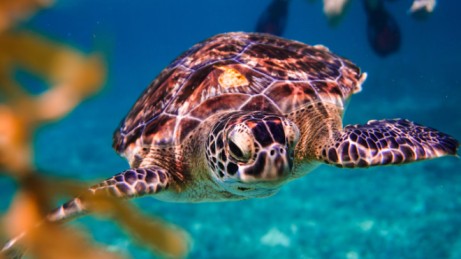
Overview of Turtle Watching Tours in Mexico
Mexico’s coastal regions are renowned for their breathtaking beauty and rich biodiversity. Among the many natural wonders that draw travelers to these shores, the opportunity to witness the remarkable spectacle of sea turtles nesting and hatching is truly one of a kind. Turtle watching tours in Mexico offer visitors an enchanting and educational experience, immersing them in the unique world of these ancient and majestic creatures.
From the pristine beaches of Baja California to the lush shores of the Yucatan Peninsula, there are numerous locations throughout Mexico that are popular for turtle watching tours. These tours provide not only a chance to see the turtles up close but also contribute to their conservation efforts and support local communities.
The Significance of Turtle Watching Tours in Mexico
Turtle watching tours in Mexico play a vital role in raising awareness about the importance of sea turtle conservation. By allowing visitors to witness the incredible nesting and hatching processes, these tours foster a deep appreciation and understanding of the challenges faced by these endangered species. Moreover, they provide an opportunity for tourists to actively contribute to their preservation through their participation and support.
The presence of sea turtles in Mexico’s waters is not only significant from an ecological perspective but also holds cultural and economic value. These magnificent creatures have been revered in Mexican folklore and their preservation is deeply intertwined with the traditions and heritage of coastal communities. Furthermore, turtle watching tours attract tourists from all around the world, boosting local economies and promoting sustainable tourism practices.
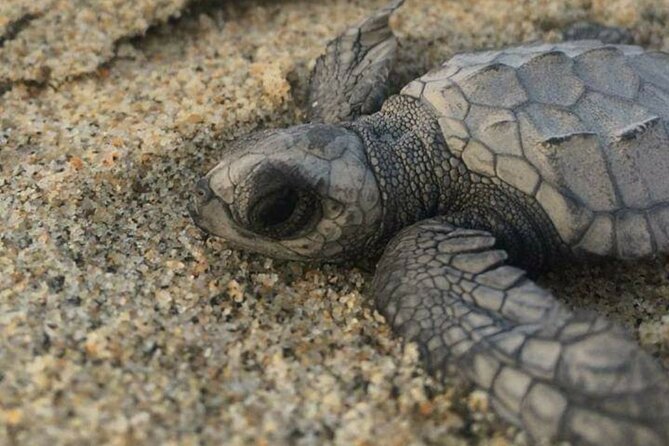
Popular Locations for Turtle Watching Tours in Mexico
Mexico is blessed with a diverse range of coastal habitats that serve as nesting grounds for various species of sea turtles. Some of the most popular locations for turtle watching tours include:
Baja California
The pristine beaches of Baja California, particularly in the municipalities of Los Cabos and La Paz, are frequented by olive ridley and loggerhead turtles. These captivating destinations offer a unique blend of natural beauty and cultural heritage, making them perfect for tourists seeking an immersive turtle watching experience.
Riviera Maya
The Riviera Maya, a stretch of coastline along the Yucatan Peninsula, is renowned for its abundance of green turtles. Visitors to this region can witness the nesting and hatching rituals of these majestic creatures while enjoying the crystal-clear waters and stunning coral reefs. The bustling tourist towns of Cancun and Playa del Carmen serve as gateways to this marine paradise.
Oaxaca
The coastlines of Oaxaca are home to not only green and loggerhead turtles but also the critically endangered hawksbill turtles. The picturesque beaches of Puerto Escondido and Mazunte offer a serene setting for turtle watching tours, allowing visitors to witness the wonders of nature in a truly enchanting environment.
Michoacan
The state of Michoacan is particularly renowned for its massive gatherings of sea turtles during the nesting season. The beaches of Lázaro Cárdenas and Zihuatanejo witness the awe-inspiring spectacle of thousands of olive ridley turtles emerging from the ocean to lay their eggs. This natural phenomenon, known as the “arribada,” is a sight to behold and draws nature enthusiasts from far and wide.
Types of Turtles Found in Mexican Waters
Mexico’s coastal waters are home to a diverse array of sea turtles, each with its own distinctive characteristics and habits. These include:
Green Turtles
Green turtles, or Chelonia mydas, are the most common species of sea turtle found in Mexico. Known for their vibrant greenish shells, they can grow to impressive sizes, with some adults reaching lengths of up to four feet and weighing over 300 pounds. Green turtles are herbivores and are often spotted grazing on seagrass beds.
Olive Ridley Turtles
Olive ridley turtles, or Lepidochelys olivacea, are named for their olive-colored shells. They are the smallest and most abundant species of sea turtle found in Mexican waters. Olive ridleys have a unique nesting behavior known as the “arribada,” where thousands of females come ashore simultaneously to lay their eggs. This extraordinary event is a major attraction for turtle watching tours.
Loggerhead Turtles
Loggerhead turtles, or Caretta caretta, are known for their large heads and powerful jaws. These omnivorous turtles can be found in Mexican waters, particularly in the Gulf of California. Loggerheads are known for their long migrations across vast distances, often traveling thousands of miles to reach their nesting sites.
Hawksbill Turtles
Hawksbill turtles, or Eretmochelys imbricata, are critically endangered and highly sought after for their beautiful shells. They inhabit the coral reefs and rocky coastlines of Mexico, particularly in the Caribbean Sea. Hawksbills play a crucial role in maintaining the health of coral ecosystems by feeding on sponges, and their presence is an indicator of a thriving marine environment.
Leatherback Turtles
Leatherback turtles, or Dermochelys coriacea, are the largest and most unique species of sea turtles. With their leathery shells, they lack the rigid plates found in other turtle species. Leatherbacks are highly migratory, often traveling impressive distances to reach their nesting sites. They can be found in Mexican waters, particularly in the Pacific Ocean.
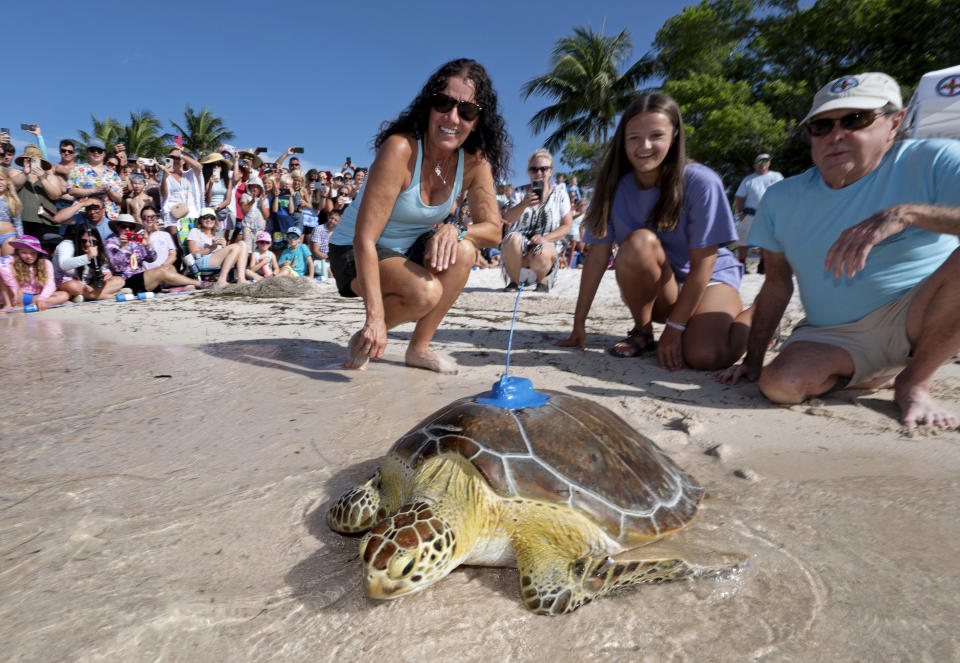
The Life Cycle of Sea Turtles
To truly appreciate the wonder of sea turtles, it’s crucial to understand their life cycle and the challenges they face at each stage.
Nesting and Hatching Process
Sea turtles typically return to the same nesting beach where they were born to lay their eggs. The female turtles dig a nest in the sand using their rear flippers and lay their eggs in clutches of around 100. After covering the eggs, the female returns to the ocean, leaving the eggs to incubate.
After a period of approximately 50 to 70 days, the hatchlings begin to emerge from their nests. This incredible spectacle usually occurs at night when the temperature is cooler and the cover of darkness provides protection from predators. The hatchlings instinctively make their way towards the brightest light, which, in a natural environment, would be the reflection of the moonlight on the ocean.
Migration Patterns of Sea Turtles
Sea turtles exhibit remarkable migratory behavior as they navigate the vast oceans to reach their feeding and nesting grounds. Some turtles, such as the loggerhead and leatherback, undertake long-distance journeys spanning thousands of miles, crossing entire ocean basins. It is believed that they rely on a combination of magnetic fields and ocean currents to navigate their way accurately.
For example, the loggerhead turtles that nest in Mexico’s Baja California region embark on epic migrations to feeding grounds off the coast of Japan. These remarkable migrations illustrate the interconnectedness of global marine ecosystems and the need for international collaboration in sea turtle conservation efforts.
Conservation Efforts and Protection of Sea Turtles
The protection of sea turtles is of paramount importance to ensure the survival of these magnificent creatures for future generations. Mexico has implemented a range of laws and regulations to safeguard sea turtles and their nesting sites.
Mexican Laws and Regulations Regarding Sea Turtle Protection
Mexico has taken significant steps towards the conservation of sea turtles through the enactment of laws and regulations. The Federal General Wildlife Law prohibits the capture, trade, and consumption of sea turtles and their eggs. Additionally, the Sea Turtle Conservation Program was created to monitor and protect nesting beaches, conduct scientific research, and raise public awareness about sea turtle conservation.
Conservation Organizations and Their Role
Numerous conservation organizations in Mexico work tirelessly to protect and preserve sea turtles and their habitats. These organizations collaborate with local communities, government agencies, and tourists to ensure the long-term viability of turtle populations.
One such organization is the Sea Turtle Conservancy, which operates in multiple locations throughout Mexico. They engage in research, education, and community-based conservation initiatives to protect nesting sites and promote sustainable practices. By partnering with tour operators, they offer visitors the opportunity to participate in conservation efforts through their turtle watching tours.
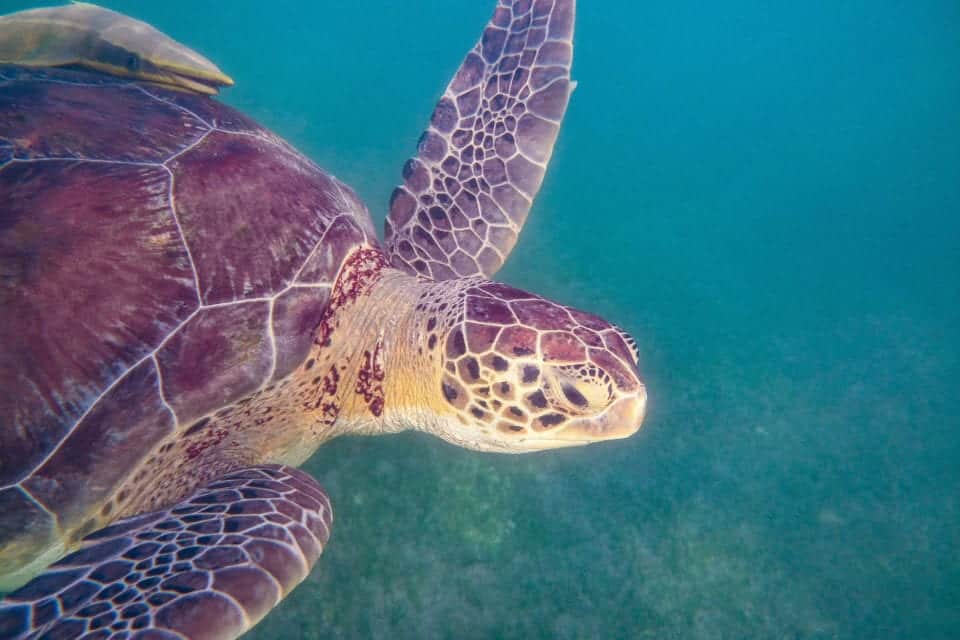
The Best Time of Year for Turtle Watching Tours
The timing of turtle watching tours varies depending on the species and their nesting and hatching patterns. Understanding the seasonal variations and nesting periods is essential to maximize the chances of witnessing these awe-inspiring events.
Seasonal Variations and Nesting Periods
Sea turtles have distinct nesting seasons that vary by species and location. Olive ridley turtles nest in Mexico in large numbers from June to November, with the peak nesting season occurring between August and October. Green turtles can be found nesting throughout the year, with the highest activity observed from June to December. Loggerhead turtles typically nest from April to September.
It’s important to note that nesting seasons can vary slightly depending on the location, and local tour operators can provide up-to-date information about the optimal times to witness nesting and hatching events.
Factors Influencing Turtle Sightings
While turtle watching tours offer a unique opportunity to witness these magnificent creatures, it’s essential to remember that encounters with sea turtles in the wild are never guaranteed. The presence of turtles can be influenced by a variety of factors, including weather conditions, tides, and the natural behaviors of these creatures.
Tourists are encouraged to manage their expectations and approach turtle watching tours with a sense of wonder and appreciation for nature. Even if a turtle sighting is not guaranteed, the experience of being in their natural habitat and supporting conservation efforts is still immensely rewarding.
Preparing for a Turtle Watching Tour
Taking the time to prepare for a turtle watching tour can enhance the overall experience and ensure visitors are equipped for an unforgettable adventure. Consider the following tips when planning your turtle watching tour in Mexico:
Choosing a Reputable Tour Operator
Selecting a reputable tour operator is crucial for a safe and responsible turtle watching experience. Look for operators that prioritize conservation and follow ethical guidelines for wildlife encounters. Reading reviews and seeking recommendations from fellow travelers can be helpful in making an informed decision.
Tour operators with a strong commitment to conservation often collaborate with local organizations and support community-based initiatives, ensuring that the welfare of sea turtles takes precedence over tourism.
What to Bring on a Turtle Watching Tour
When embarking on a turtle watching tour, it’s essential to bring the necessary items to ensure comfort and protection. Consider packing the following:
- Lightweight clothing and comfortable footwear for beach walks
- Sunscreen and a hat for sun protection
- Insect repellent to ward off mosquitoes and sandflies
- Binoculars for a closer look at the turtles and other marine wildlife
- A camera or smartphone to capture the magical moments
- A reusable water bottle to stay hydrated
- Snacks or light refreshments, as some tours can be lengthy
Visitors should always adhere to the “leave no trace” principle, ensuring that they do not leave any waste behind and do not disturb the natural environment.
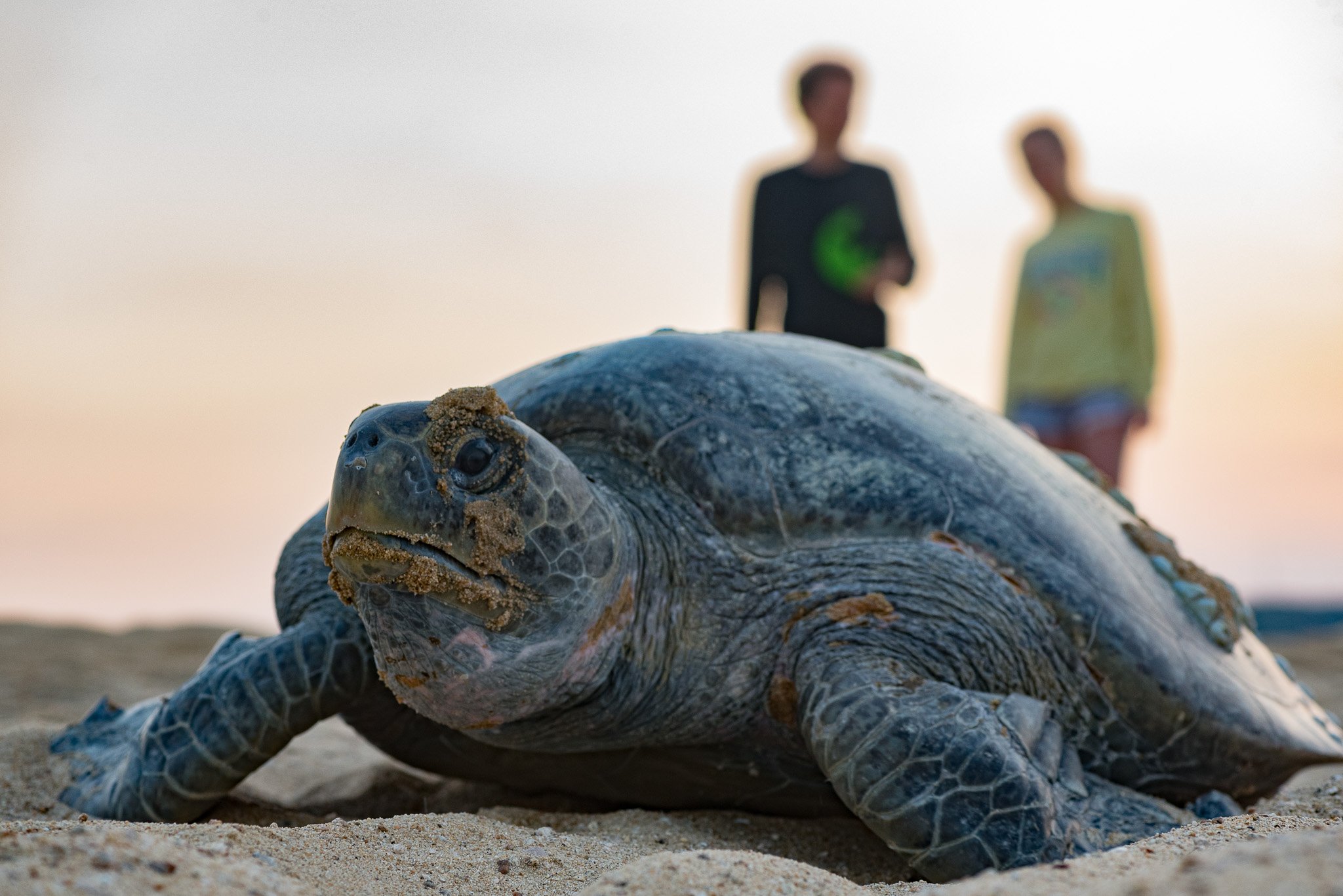
Guidelines and Ethics for Turtle Watching
Responsible behavior is essential when observing sea turtles in their natural habitat. It is important to follow ethical guidelines to minimize disturbance and to prioritize the wellbeing of these vulnerable creatures.
Responsible Behavior While Observing Turtles
When encountering sea turtles, it is crucial to maintain a respectful distance to avoid causing stress or disrupting their natural behaviors. Touching or attempting to ride sea turtles is strictly prohibited, as it can harm these delicate creatures.
It’s also important to follow any instructions provided by tour guides or conservationists. They are knowledgeable about the specific behaviors and needs of sea turtles and can guide visitors on appropriate ways to observe them.
Importance of Not Disturbing Nesting Sites
Nesting sites are delicate and must be treated with utmost care. Sea turtles can be easily frightened or deterred from laying their eggs if they sense human presence. Visitors should refrain from using flashlights, loud noises, or intrusive behaviors that could disturb nesting turtles.
By respecting their space and following tour guides’ instructions, visitors contribute to the overall preservation of nesting sites, ensuring that future generations of sea turtles have a safe haven to continue their life cycles.
The Turtle Nesting Process
Discovering a nesting site and observing the nesting process is a truly magical experience that few get to witness. The nesting process unfolds in a series of remarkable stages, offering spectators a glimpse into the ancient rituals of these incredible creatures.
Discovering Nesting Sites
Locating a sea turtle nesting site can be an adventure in itself. Visitors often join guided walks along the beach, led by knowledgeable tour guides or experienced conservationists who have a deep understanding of the nesting patterns and behaviors of sea turtles.
These walks provide an opportunity to learn about the significance of nesting sites, the signs to look for, and the precautions to take to ensure a safe and respectful observation.
Observing the Nesting Process
Once a nesting site is located, visitors usually keep a respectful distance from the nesting turtle. The nesting process is delicate and can be interrupted if turtles feel threatened or disturbed. Observers have the privilege of witnessing the remarkable sight of the female turtle using her rear flippers to dig a deep nest in the sand.
After the nest is carefully prepared, the female lays her eggs, covering them with sand to protect them from predators and the elements. The entire process can take several hours, and the dedication and precision of the nesting turtles are truly awe-inspiring.
Witnessing the Incredible Hatchlings
The culmination of the nesting process is the emergence of the hatchlings from their nests. This magical event is filled with excitement, anticipation, and a sense of wonder, as these tiny creatures embark on their perilous journey towards the ocean.
Excitement of Hatching Events
Hatching events are usually conducted at night to minimize disturbance to both the hatchlings and nesting turtles. Visitors often gather in designated areas with dimmed lighting to witness the hatchlings making their way to the ocean.
As the first hatchling emerges and begins its journey, it sets off a chain reaction, with the remaining hatchlings following suit. This synchronized emergence is believed to increase their chances of survival, as they navigate the treacherous path to the safety of the ocean.
Release of Baby Turtles into the Ocean
Witnessing the release of baby turtles into the ocean is an incredible moment that highlights the resilience and determination of these remarkable creatures. Tour operators and conservation organizations often coordinate these releases as part of their turtle watching tours, giving visitors the opportunity to directly contribute to sea turtle conservation efforts.
Visitors are typically invited to hold the baby turtles in their hands and release them near the shoreline, allowing them to scuttle towards the inviting waves. This act of releasing the turtles into their natural habitat symbolizes hope and the collective responsibility to protect and preserve these fascinating species.
Educational and Research Opportunities
Participating in a turtle watching tour in Mexico provides unique opportunities for education and research, allowing visitors to contribute to scientific studies and learn about sea turtle conservation.
Contribution to Scientific Studies
Turtle watching tours often collaborate with scientists and conservationists who conduct ongoing research on sea turtle populations. Participants may have the chance to assist with data collection, such as tagging turtles for tracking purposes or conducting beach patrols to monitor nesting activities.
By contributing to these scientific endeavors, visitors actively support the long-term conservation and management of sea turtles, ensuring that their habitats and migration routes remain protected.
Educational Programs on Sea Turtle Conservation
Turtle watching tours in Mexico frequently incorporate educational components to help visitors deepen their understanding of these captivating creatures. Visitors may have the opportunity to attend informative presentations and workshops, conducted by knowledgeable guides and experts in the field.
These programs cover a wide range of topics, including the biology and behavior of sea turtles, the threats they face, and the steps being taken to ensure their survival. Participants gain valuable insights into the significance of sea turtle conservation and are empowered to become ambassadors for these incredible creatures.
Other Marine Wildlife Encounters
While turtle watching tours take center stage, Mexico’s rich coastal waters offer countless opportunities to encounter a diverse array of marine wildlife.
Spotting Dolphins and Whales
The coastal regions of Mexico are known for their incredible populations of dolphins and whales. A boat tour or whale-watching excursion can provide visitors with a chance to witness these majestic creatures in their natural habitat. From playful dolphins leaping through the waves to awe-inspiring breaches by humpback whales, these encounters are sure to create lasting memories.
Snorkeling with Colorful Fish and Coral Reefs
Mexico’s coastal waters are teeming with vibrant fish and coral reefs, creating a paradise for snorkelers and scuba divers. Exploring these underwater wonderlands offers a glimpse into a world filled with colorful marine life, from tropical fish darting among the corals to graceful rays gliding through the water. Snorkeling excursions can be combined with turtle watching tours, allowing visitors to experience the full spectrum of Mexico’s marine biodiversity.
Local Culture and Community Involvement
Turtle watching tours in Mexico provide an excellent opportunity to engage with local communities and learn about the cultural significance of sea turtles.
Interacting with Local Communities
Coastal communities in Mexico have a deep bond with sea turtles, ingrained in their cultural heritage and traditions. Many tour operators collaborate closely with these communities, involving them in conservation efforts and sharing their unique insights into the relationships between humans and turtles.
Visitors have the chance to interact with locals, learning about ancient traditions, folklore, and the efforts of these communities to protect their natural surroundings. This cultural exchange enriches the overall experience, offering a deeper appreciation for the interconnectedness between humans and the environment.
Learning about the Cultural Importance of Turtles
The cultural importance of sea turtles in Mexico cannot be overstated. From the ancient Aztecs and Mayans to modern-day communities, turtles hold a revered place in folklore, art, and mythology. Their symbolism represents wisdom, longevity, and the delicate balance of ecosystems.
Many turtle watching tours include activities that provide insights into the cultural significance of turtles, such as visiting museums or art galleries featuring turtle-themed exhibits. These experiences add a layer of depth to the tour, fostering a deeper connection between visitors and the stories of the people who have lived alongside turtles for centuries.
Unique Experiences and Adventures
Turtle watching tours in Mexico offer a myriad of unique experiences and adventures that go beyond the ordinary.
Nighttime Turtle Watching Expeditions
Embarking on a nighttime turtle watching expedition adds an element of mystery and enchantment to the tour. With the moon casting a soft glow on the ocean and the beach, visitors can witness the magical sight of nesting turtles emerging from the darkness to lay their eggs. The tranquility of the night enhances the sense of awe and allows for an intimate connection with these elusive creatures and nature’s wonders.
Participating in Turtle Release Programs
Conservation organizations actively engage visitors in turtle release programs, allowing them to directly contribute to the preservation of sea turtles. Participants have the opportunity to hold and release baby turtles into the ocean, witnessing their first steps on their remarkable journey.
These moments are filled with both joy and a sense of responsibility, as visitors become personally invested in the future of these enchanting creatures. The memories of releasing baby turtles into the vast ocean will forever remain etched in their hearts as a testament to their commitment to conservation.
Conclusion
Unveiling the wonders of Mexico’s turtle watching tours offers an immersive and extraordinary experience that combines the beauty of nature, cultural heritage, and the urgency of conservation. These tours not only allow visitors to witness the remarkable nesting and hatching processes of sea turtles but also contribute to their protection and the sustainability of coastal communities.
With their fragile existence and significance as indicators of marine ecosystem health, sea turtles require our unwavering support and admiration. Turtle watching tours in Mexico provide an opportunity to connect with these ancient creatures on a deep level, fostering a sense of personal responsibility, and igniting the desire to ensure their survival for generations to come.
Embark on a turtle watching tour in Mexico and immerse yourself in the enchanting world of sea turtles. Let the beauty and wonder of these incredible creatures captivate your heart and leave an indelible mark on your soul.